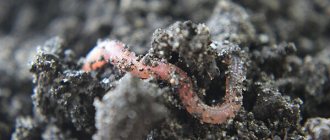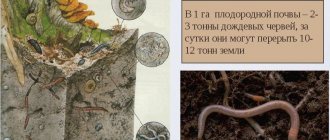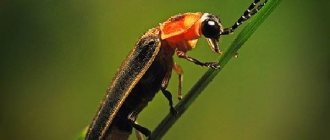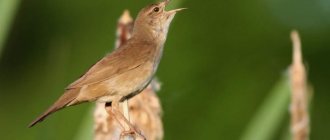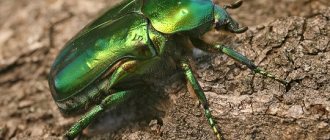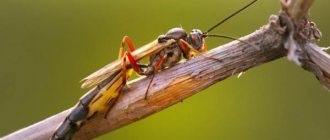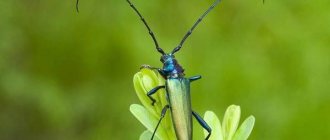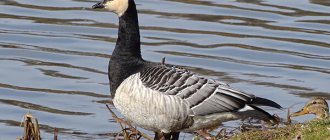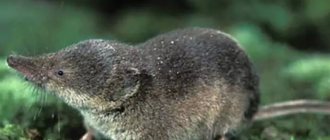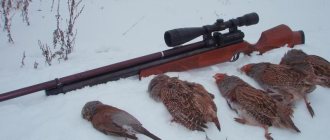Worms
Worms are representatives of the class of invertebrate animals of the subkingdom Multicellular of the Animal Kingdom.
They are characterized by an elongated oblong body, with a front and a back part. Today there are a huge variety of different types of worms. They differ from each other in appearance, size, habitat, method of reproduction, type of respiration, type of nutrition. What all worms have in common is the presence of a skin-muscular sac that covers the body and performs a protective function. There are the following types of worms depending on body shape:
- flat;
- ringed;
- round.
Their body is covered with three germ layers, which give rise to the development of all organs and tissues. These are ectoderm, endoderm and mesoderm.
- parasitic;
- tape;
- oligochaetes;
- polychaete;
- rain.
Benefit
When we see a blooming garden, we understand that to some extent it is thanks to earthworms that enrich the soil with nutrients. These creatures process organic matter in the soil, turning it into nutrients that are easily absorbed by plants.
When earthworms dig, they plow the soil at the same time, which allows roots to grow, allowing for healthy plant growth. Tilled soil absorbs water and holds it inside. In addition, air circulates better in such soil. The movements of earthworms bring nutrients found deep in the soil to the surface. Nutrients enter the upper layers of the soil, where they are easier for plants to absorb.
In addition to the benefits that earthworms bring to plants, they also serve as food for birds. In early spring, birds fly to gardens precisely in search of worms, because at this time of year there are still no fruits or seeds that could serve as food for them. If an earthworm is placed in a container that does not allow light to penetrate, it will live in it for about two weeks, provided that peat moss is first placed in the container.
There are millions of earthworms. They are divided depending on their properties and location. They can be divided into: earthworms, red worms, field worms, nightworms and red hybrids. In one garden you can find several varieties of worms.
Earthworms come in a variety of colors and sizes. Their color is characterized by shades of gray, black, red or red-brown. Their length, as a rule, is 5 - 31 cm. And in some cases you can find worms of incredible length of about 370 cm, such as individuals living in Australia. Moist soil rich in nutrient-rich organic matter is ideal for worms.
Earthworms feed on insects, rotting animal carcasses, manure, lettuce and watermelon rinds. In most cases, earthworms avoid alkaline and acidic substances. However, their food preferences depend on their species. Nightworms, as their name suggests, scavenge for food from the surface after dark.
the remains of herbs and organic matter make up the diet of the worms. Having discovered food, they begin to dig in the ground, holding the food they find in their mouths. Worms really like to combine food with soil. Many earthworms, such as red worms, crawl to the surface of the soil in search of food.
Gardeners can help earthworms thrive by adding organic matter to the soil. When the organic content of the soil decreases, earthworms go in search of other soil with more favorable conditions, otherwise they will simply die. Proteins from the remains of worms are converted into nitrogen and feed plants. However, this benefit is very short-lived. The death of earthworms implies a deterioration in the condition of the garden, such an important role they play in nourishing the soil.
Earthworm or earthworm. schizoform
What is worm breath
Respiration is the process of oxygen entering the body, its use in the oxidation of nutrients and the release of carbon dioxide from the body, as well as the transportation of these gases within the body. The process of gas exchange is the absorption of oxygen from the environment and the release of carbon dioxide.
Aquatic worms absorb oxygen from the water in which it is dissolved, while terrestrial worms absorb oxygen from the atmospheric air.
Respiratory organs are present only in a small number of worms; basically, they can breathe over the entire surface of their body. Under the thin skin there are many blood vessels through which oxygen enters the blood and carbon dioxide is expelled.
In most worms, the respiration process proceeds as follows: oxygen enters the cells through the surface of the body. Most worms do not have specialized respiratory organs.
What do they eat?
The type of food an earthworm eats depends on the species to which it belongs. Everything that earthworms eat can be called organic waste. This concept includes:
- rotting leaves, branches, grass;
- perishable fruits and vegetables;
- bird manure and droppings;
- drinking straw.
- sawdust.
Earthworms have a very interesting way of feeding. They ingest plant debris along with the soil, and the body absorbs only the necessary nutrients. Without having time to process the food, the worms drag it into their holes. In addition, many species store supplies in specially created storage facilities, and then visit them with the whole family.
Peculiarities of worm breathing
Most worms do not have a respiratory system. Respiratory organs are found in only a small number of them. Oxygen dissolved in water or air penetrates the surface of the worm's body, and the resulting carbon dioxide is removed outside.
Most often, oxygen necessary for breathing enters the body through moist skin. Thus, in annelids, oxygen enters the capillaries located under the cuticle from the skin epithelium.
In worms with a circulatory system, such as annelids, respiration involves blood flowing to the surface of the skin or gills. There it is freed from carbon dioxide and saturated with oxygen, which is subsequently transported throughout the body.
Due to their low mobility, worms do not require large amounts of oxygen.
Class II. Leeches (Hirudinea)
Treatment with leeches (hirudotherapy) has been used since ancient times. The saliva of a medicinal leech contains not only the protein hirudin, which prevents blood clotting, but also substances with an antibacterial effect. These two effects - blood conservation and bacterial destruction - are even used in tissue transplantation.
But there are many other types of leeches. They are united by their origin from an oligochaete ancestor and a predatory lifestyle. Not all leeches drink the blood of mammals; some species feed on mollusks or small worms. And although most of them prefer fresh water, some species are found in seawater and tropical forests. In winter, leeches go into suspended animation.
The body of leeches is flattened; it comes in brown, black, green or red. There are suction cups at its ends. There are a lot of outer rings, but in reality there are fewer segments.
Leeches distinguish light with eyes at the head end and light-sensitive cells throughout the body.
The musculature is complemented by a middle diagonal layer of muscles. It is so strong that the animal can stand on the back sucker and sway in search of support or food, suck tightly and breathe in the water. This is how the leech moves - with one sucker it attaches to the support, and with the other it finds a new surface and sticks to it.
Leeches have a powerful digestive system. They are divided according to the structure of the pharynx. One type of pharynx structure is a proboscis, which extends through the mouth. The other type of pharynx does not extend, but is equipped with a jaw with teeth.
The salivary glands open into the pharynx. The midgut forms several lateral protrusions.
Leeches do not have a secondary body cavity, powerful respiratory or circulatory systems. All they had left of the secondary body cavity were channels, which replaced the circulatory and respiratory systems.
Leeches are hermaphrodites; they cannot reproduce asexually. Male organs: testes, ejaculatory duct, prostate glands, copulatory organ. Female genital organs: ovaries, oviducts, uterus and vagina.
Fertilization occurs inside the leech's body. During mating, animals exchange sperm. Like earthworms, leeches create a cocoon for the development of eggs. They leave it at the bottom, in algae or in the damp soil of the shore.
Types of worm respiration
According to the type of respiration, all worms can be divided into aerobic (living in an oxygen environment) and anaerobic (living in an oxygen-free environment). Anaerobic organisms do not require oxygen to oxidize nutrients. In aerobic organisms, the process of oxygen entering cells occurs due to the permeability of cell membranes and diffusion. Diffusion is the process of equalizing the concentration of oxygen inside the body and in its environment.
During aerobic respiration, as a result of complex processes, energy is extracted from nutrients, and oxygen supplied from outside is used to oxidize glucose molecules. It occurs in mitochondria and is characteristic of complex organisms.
Anaerobic respiration occurs without the participation of oxygen; organisms receive energy for life from organic and inorganic substances. The process of anaerobic respiration is similar to fermentation.
How to use vermicompost
Humus contains a mobile (water-soluble) fraction of humates: lithium, potassium and sodium humates. These are the most valuable humates for any plants. They are absorbed by plants first of all. These humates, even at very low concentrations, stimulate seed germination, plant growth and development, promote the formation of chlorophyll, enhance photosynthesis, and supply mineral salts from the soil to plants.
It has been proven that soluble humates are non-toxic, non-carcinogenic, non-mutagenic, non-teratogenic and do not have embryological toxicity. No residual amounts of humates are found in plants. These are environmentally friendly products of processing plant residues, created by nature itself using natural technology and intended by nature as a specific product for the entire plant world.
As many researchers emphasize, physiologically active humic substances increase the utilization rate of mineral fertilizers. They recommend using them in a mixture with mineral fertilizers or against their background. With this combined use of liquid humates, the yield increased in field and laboratory experiments by more than 25...35%.
Along with an increase in yield, researchers noted a reduction in ripening time and an improvement in product quality (increased content of proteins, sugars, carotene, and oils in oilseeds).
The action of humates is especially effective in the initial period of plant development and during the period of greatest tension in biochemical processes, as well as when the external conditions of plant growth deviate from the norm, during drought and frost, excess nitrogen in the soil, oxygen starvation, etc. Under the influence of humic substances in The soil undergoes an accelerated process of decomposition of poisons that have entered it, and their accumulation in plant agricultural products decreases.
Thus, humates should be considered as substances that help reduce the amount of various poisons both in the soil and in plant products, which is especially important in connection with the problem of biosphere pollution and excessive chemicalization of agricultural production.
In the Central regions of the Non-Black Earth Region, in Siberia and the Far East, due to possible unfavorable meteorological conditions, an important task is to find a way to reduce the ripening period and the timing of mass harvesting of vegetables by 10...15 days. This problem, as studies have shown, can be solved with the widespread use of vermicompost. The use of it and other liquid humic preparations in agricultural production can expand the geographical boundaries of growing vegetables and a number of heat-loving plants in colder geographical zones.
Respiratory organs of worms
Worms do not have specialized respiratory organs. They absorb oxygen at the surface of the body. Accordingly, it can be argued that the main respiratory organ of worms is its skin. This is most clearly manifested in flatworms.
In roundworms, oxygen is also absorbed by the intestinal tissues. In conditions of oxygen starvation, they are able to switch to anaerobic respiration.
Some polychaete worms developed the first respiratory organs - gills. These are thin-walled leaf-shaped, bushy or feathery outer outgrowths of part of the dorsal lobes of the parapodia, penetrated by blood vessels.
Getting to know the muscles
The muscle tissue of flatworms is represented by a muscular sac, which lies under the epithelium. It consists of a number of layers of muscle-type cells that are not divided into muscles. However, some differentiation is observed in the areas of the pharynx and reproductive system. The outer part of the cells of the muscle layers are oriented transversely, and the inner ones are oriented along the posterior-anterior axis of the body. The outer muscles are called the annular layer, and the inner ones are called the longitudinal muscles layer.
Breathing of flatworms
These worms are classified as protostomes. The type of flatworms is divided into the following classes:
- free-living ciliated (marine, terrestrial and freshwater planarians);
- parasitic flukes (trematodes);
- parasitic tapeworms (cystodes).
Free-living flatworms respire as aerobes, while parasites respire as anaerobes. The most common representatives of flatworms are:
- liver flukes;
- cat flukes;
- frog flukes;
- pork tapeworm;
- bovine tapeworm;
- Echinococcus.
They can be found in salt and fresh water bodies, in places with high humidity. Worms of this species can also parasitize vertebrate and invertebrate animals.
Most flatworms do not have a respiratory system with respiratory organs; they breathe through the entire surface of the body. Individuals living in an environment with little oxygen can breathe anaerobically.
Respiration of aerobic flatworms occurs by diffusion, that is, the interpenetration of gases, evenly over the entire surface of the body. Breathing over the entire surface area of the body is responsible for the flat shape of the worms. Oxygen transport is carried out by their branched intestines.
Taxonomy of ringlets
Traditionally annelids
similar to
arthropods
.
Their common features include the presence of postlarval segmentation of the body and the associated special structure of the nervous system (ventral nerve cord). Of all the annelids, the polychaetes
, which may indicate that annelids are a paraphyletic group.
Like arthropods, they have developed lateral appendages of the body, parapodia
, which are considered the precursors of the legs of arthropods, and the muscular lining of the dorsal vessel plays a major role in blood circulation.
The presence of a cuticle cannot be considered a feature unique to annelids and arthropods, since cuticular epithelia are quite widespread in various groups of invertebrates. Moreover, the cuticle of annelids for the most part does not contain the chitin characteristic of arthropods. In annelids, as in some other groups of worms, the chitin-containing cuticle is present only in small areas of the body: on the “jaws” in the pharynx and on the setae.
At the same time, in a number of features of embryonic development, annelids are close to other trochophore animals, for example, mollusks
and
sipunculids
.
A number of researchers believe that the similarity with arthropods in such characteristics as segmentation, the structure of the nervous system, and the cuticle is the result of convergent (parallel) evolution.
Annelids include from 7,000 to 15,000 species, divided in different classifications into a different number of classes. Traditional classification involves division into 4 classes: polychaete worms
(Polychaeta),
oligochaete worms
,
leeches
and
echiurids
. More modern classes:
- Archiannelida
, - Myzostomida
, - Polychaete
worms (Polychaeta) - the most numerous class, mainly marine forms, - Belted
worms (Clitellata), which have a characteristic belt on their body, are divided into subclasses:
Oligochaeta
, which include earthworms, - Leeches
(Hirudinea), - Acanthobdelida,
- Branchiobdellida.
In addition to these classes, representatives of the pogonophora
(Pogonophora) and
Echiura
.
One can probably assume that ringlets are mainly non-molting (spiral-developing) animals, except for polychaetes, which may be the predecessors of tardigrades, onychophorans and other arthropods. Ehiur
are now isolated separately, although they are the animals most closely related to ringed animals.
As for pogonophora
, these worm-like animals are apparently an intermediate link between ringlets and future chordates.
Breathing of annelids
Annelids get their name due to their elongated body, reaching a length of up to 15 cm and consisting of a large number of divided segments resembling rings. Each body segment has major organs or parts. Thanks to this, if 2-3 rings are damaged, the annelid worm does not die.
Annelids differ from other types of worms in the high organization of their nervous system, the presence of a closed circulatory system, and the presence of a secondary body cavity.
Among the most famous representatives of annelids are:
- oligochaetes, or oligochaetes;
- leeches (false horse, fish, horse, snail and medical);
- misostomids;
- polychaete worms or polychaetes.
Many annelids are characterized by cutaneous respiration. Gas exchange occurs across the entire surface of the body. Oxygen penetrates the worm's body through numerous capillaries. Carbon dioxide, which is formed in the tissues, is also removed through the skin. Due to this feature, annelids live in moist soil, and after rain they crawl to the surface.
Annelids live in fresh water bodies, salty seas and moist soil.
Class Oligochaeta
Earthworms (lumbricids). Pipe makers
Oligochaetes mainly live in fresh water bodies and soil. The body is elongated, cylindrical. The head section is not pronounced; the head lobe, as a rule, is devoid of appendages and eyes. Body segmentation is homonomic. The mouth is located on the first segment after the head lobe. There are no parapodia. On the sides of the body there are setae, usually four tufts on each segment. Mature individuals usually have a glandular “girdle” in the anterior third of the body. The anal lobe also does not bear any appendages. The anal opening is located on the anal blade.
Fig.1. Transverse section through the body of an earthworm: 1 - epithelium, 2 - circular muscles, 3 - longitudinal muscles, 4 - coelom, 5 - chloragogenous cells, 6 - intestinal cavity, 7 - metanephridia, 8 - dorsal blood vessel, 9 - abdominal blood vessel , 10 - ventral nerve cord, 11 - seta, 12 - typhlosol.
The skin-muscle sac has a structure typical of annelids: cuticle, single-layer epithelium and two layers of muscles (Fig. 1). The epithelium contains many glandular cells that secrete mucus. Mucus protects the skin from mechanical damage and, in soil species, from drying out.
The digestive system includes the following organs: mouth, oral cavity, muscular pharynx, esophagus, crop, gizzard, midgut, hindgut, anus. The ducts of three pairs of calcareous glands open into the cavity of the esophagus of earthworms. Their secretions neutralize humic acids, which are found in the food of earthworms. To increase the absorption surface, an internal fold was formed on the upper part of the intestine - typhlosol (Fig. 1).
Gas exchange occurs in the subcutaneous network of capillary blood vessels.
The circulatory system of polychaete worms has the same structure as that of polychaetes: it includes dorsal, abdominal and annular blood vessels. Unlike polychaetes, oligochaetes have ring vessels in the esophagus that pulsate; they are called “ring hearts”. The respiratory pigment hemoglobin is dissolved in blood plasma.
The excretory system is represented by metanephridia, located in pairs in each segment. Solid excreta accumulate in the chloragogenic cells of the coelomic epithelium. Chloragogenic cells filled with excreta are partially removed through the metanephridia funnels.
rice. 2. Internal structure of an earthworm: 1 - mouth, 2 - pharynx, 3 - esophagus, 4 - crop, 5 - stomach, 6 - midgut, 7 - cephalic ganglia, 8 - abdominal nerve cord, 9 - annular blood vessels, 10 - dorsal blood vessel, 11 - abdominal blood vessel.
The nervous system, like all annelids, includes paired suprapharyngeal ganglia, paired subpharyngeal ganglia and a double ventral nerve cord. Sense organs are poorly developed. Numerous tactile, photosensitive and other sensory cells are scattered in the epithelium. Eyes are usually absent.
Oligochaetes are bisexual animals. There is no sexual dimorphism. In earthworms Lumbricus terrestris, the reproductive system has the following structure (Fig. 3). Two pairs of testes are located in the 10th and 11th segments. From above they are covered with three pairs of seed sacs. In the seminal sacs, sperm accumulates and sperm mature. Mature sperm enter the funnels of the vas deferens. The vas deferens form two longitudinal canals, opening with paired male genital openings on the 15th body segment.
Two ovaries are located in the 13th segment. Here, in the 13th segment, there are funnels of the paired oviducts, which open with the genital openings in the 14th segment. The ovaries and funnels of the oviducts are covered on top by egg sacs. In the 9th and 10th segments there are two pairs of seminal receptacles. Each of the spermatic receptacles is an invagination of the skin. The openings of the spermatic receptacles, as well as the male and female genital openings, are located on the ventral side of the body. In the area of the 32–37th segments there is a “girdle”. The epithelium of the segments of this area has glands that secrete a secretion from which the cocoon wall is formed.
rice. 3. Scheme of the structure of the reproductive system of an earthworm: 1 - funnel of the vas deferens, 2 - seed sacs, 3 - ovary, 4 - oviduct, 5 - sperm receptacle, 6 - testes, 7 - vas deferens, 8 - female genital opening, 9 - male genital opening .
During the breeding season, all individuals become males, as it were, since only their testes function. The worms are applied to each other with their ventral sides so that the girdle of one worm is located at the level of the seminal receptacles of the other worm, and exchange seminal fluid, which enters the seminal receptacles. After exchanging male reproductive cells, the worms disperse. The girdle begins to secrete a mucous “muff”. After some time, the ovaries mature, and all individuals become, as it were, females. The “muff” begins to slide from the waistband area to the front end of the body. As the “muff” moves through the 14th segment, eggs are deposited into it; through the 9–10th segments, foreign sperm are “injected” into it from the seminal receptacles, and fertilization occurs. After the “muff” is dropped from the front end of the body, its ends will close and it will turn into an egg cocoon, inside which young worms develop.
In all oligochaetes, development occurs without larval stages (without metamorphosis). Small worms similar to adults emerge from the egg cocoon.
Asexual reproduction occurs in some species of freshwater oligochaetes. It can happen in two ways. In the first method, the mother is divided transversely into fragments, each fragment then develops to normal size. In the second method, the parent individual, by differentiating parts of the body, turns into a chain of short daughter individuals, followed by the disintegration of this chain. In earthworms, asexual reproduction is extremely rare.
True earthworms, or Lumbricidae, are a family of oligochaetes that live in the soil; a few species lead an arboreal or semi-aquatic lifestyle.
rice. 4. Appearance of the earthworm Lumbricus terrestris
One of the common representatives of this family, the common earthworm (Lumbricus terrestris), reaches a length of 30 cm, a thickness of 1 cm, and the girdle is located on 32–37 segments (Fig. 4). Digs deep passages in the soil, extending 2 m or more from the surface. Each segment bears four pairs of setae. When digging, earthworms, relying on bristles, push the soil apart with the front end of their body. Lumbricus terrestris feeds on fallen leaves and other plant debris, which it collects at night on the soil surface and carries into its burrow. If the soil is dense, then when making a tunnel, the soil is swallowed and passed through the intestines.
In this case, humus and organic matter in the soil are used as food, and grains of sand help grind the swallowed pieces of leaves. The worms throw out the soil that has passed through the intestines onto the surface in the form of characteristic heaps - coprolites.
Earthworms are of great importance in soil formation, which was first noted by Charles Darwin. By pulling the remains of plants into the burrows, they enrich it with humus. By making passages in the soil, they facilitate the penetration of air and water to the roots of plants. By ingesting soil and plant residues, earthworms accelerate the processes of mineralization and humus formation.
Earthworms are characterized by a high ability to regenerate. The cut worm does not die; each of its parts restores the missing ends. Moreover, the rear end of the body is restored easily, while the front end is restored extremely rarely and with great difficulty.
rice. 5. Tubifex: on the left - appearance, on the right - tubifex, half buried in the ground.
Tubificidae (Fig. 5) live in fresh water bodies. The front end of the body is usually immersed in silt, the rear end is above the bottom surface and makes characteristic oscillatory (respiratory) movements. The less oxygen in the water, the more intense these respiratory movements and vice versa. When the oxygen content is high, the tubifex worms are completely immersed in the mud. Around a part of the body protruding from the ground, many species of tubifex worms build a short tube of silt particles glued together with mucus.
Tubifex worms are ground eaters; they swallow silt and pass it through the intestines. The organic component of sludge serves as food. Tubifex worms tolerate even very severe pollution of water bodies. Their numbers in urban and livestock drains reach several thousand individuals per 1 m2 of bottom. By consuming organic matter, tubifex worms help purify water. Tubifex is a good food for fish.
The Australian earthworm (Meganoscolides australis) is the largest of the modern oligochaetes, reaching a length of 2.5–3 m. It belongs to the Acanthodrilidae family. Local residents use these worms for food.
► Description of other classes of the Annelid type:
- Class Polychaeta
- Class Leeches (Hirudinea)
- Class Echiurida
- Brief description of the type Annelids
► The section Bilaterally symmetrical (Bilateria) subkingdom Multicellular also includes:
- Type Flatworms
- Type Roundworms
- Type Shellfish
- Phylum Arthropod
► Go to the table of contents of the book “Zoology of Invertebrates. Theory. Tasks. Answers"
Breathing of roundworms
Roundworms are characterized by a thin cylindrical body, elongated in length, pointed at both ends and round in cross section. It is covered with a skin-muscle sac, which is a dense multilayer cuticle of 9 layers, epithelial tissue and a layer of longitudinal muscles. The cuticle performs a protective function.
Representatives of roundworms include;
- roundworms;
- pinworms;
- Guinea worms;
- trichinella;
- hairy;
- nematodes;
- guinea worm.
They are characterized by anaerobic respiration, that is, they breathe over the entire surface of the body through its integument. In some types of roundworms, the energy necessary for life is released due to the breakdown of accumulated glycogen - organic matter.
Roundworms are found in fresh and salt water bodies, in soil, and they also parasitize plants and animals (roundworms, pinworms, nematodes).
Nutrition and Digestion
Inside the skin-muscle sac there is a cavity filled with liquid, in which all internal organs and systems are located.
Under favorable environmental conditions, worms feed non-stop. Over the years of its life, each individual processes several kilograms of rotting organic matter (invertebrates do not touch living vegetation). What is the structure of the intestine and the function of invertebrate digestion?
In the front part of the body there is a mouth, through which the worm swallows the nutrient substrate using the muscular pharynx. Next, the food enters the esophagus, crop and gizzard. The walls of the stomach grind food particles, and then it enters the midgut. There, digestion occurs with the help of enzymes and absorption of substances necessary for the animal’s body.
Undigested waste is thrown out through the hindgut and anus (earthworm excretory organs). The entire digestive tract is one intestinal tube, divided into sections.
In the intestines, rotting organic residues are thoroughly mixed with soil particles, digestive juice, and microflora. Excrement (coprolites) look like dense granules of an earthy color. The composition of coprolites is unique. It contains all the nutrients plants need for full development.
Musculature
